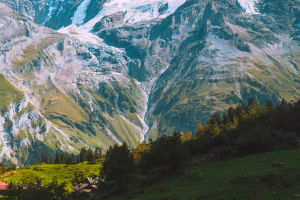A lake is a natural depression that accumulates water all year round and is not directly connected to the ocean. It is a general term for lake basins and lake water. The water layers of the lake, from top to bottom, are the surface water layer, the thermocline layer, the hydrostatic layer, and the bottom mud layer.
A body of water that accumulates in relatively closed depressions on land, a lake basin is a relatively closed depression. A lake is a complex interaction of lake basins and moving water bodies.
Due to the exchange of matter and energy in the lake, a series of physical, chemical, and biological processes are generated, forming a unique lake ecosystem.
The total area of lakes on Earth is about 2,058,700 square kilometers, accounting for 1.5% of the total continental area. The total water volume of the lake is about 176,400 cubic kilometers, of which freshwater storage accounts for about 52%.
Darwin once said that all life on earth was born in the ocean. A lake can be thought of as a small ocean, capable of independently forming a small ecosystem. It can also be a channel connecting the atmosphere and the ocean. A lake is a collection of its surroundings.
Lakes are home to producers, consumers, and decomposers. Producers make nutrients from inorganic substances in the environment through photosynthesis. Consumers are heterotrophic organisms that feed on other organisms or organic matter, with herbivores as primary consumers and carnivores as secondary consumers.
These organisms interact to form a complex ecosystem. In addition, the shoreline and surrounding environment of the lake are also an integral part of the lake ecosystem.
There is a close connection between the plant and animal biome on the shoreline and the water body of the lake. They are interdependent and restrict each other, forming the overall ecosystem of the lake.
On the time scale of geological history, lakes are short-lived. Various sediments brought in by the river have been filling the lake from the beginning. Erosion of the lake basin by the lake itself can in some cases eventually create notches that allow the lake to drain.
The growth and deposition of plants in the lake can turn shallow lakes into swamps or mud ponds, and finally into dry land. The destructive development and utilization of natural lakes by human beings will inevitably accelerate the degradation process of lakes, which we must realize.
Lakes have important economic and social value to human beings. Many lakes are important water resources used for irrigation, water supply, power generation, etc. The lake is also a place for leisure, tourism, entertainment, and cultural activities, attracting countless tourists to visit and experience water sports.
In addition, the lake is an important fishery resource, providing abundant freshwater fish and aquatic plants, which in turn provides a sustainable food source and livelihood for local residents.
Besides the importance mentioned above, lakes also have an impact on the environment and climate. Lakes play a regulating role by slowing down flooding caused by rainfall.
At the same time, the lake can also increase the humidity in the area and improve the local climate. In addition, lakes can absorb carbon dioxide in the atmosphere, alleviate the greenhouse effect, and protect the ecological balance of the earth.
Lakes are a vital component of our planet's ecosystem. They support various forms of life and have significant economic and social value.
While human beings have benefited greatly from the lakes, it is essential that we also take steps to protect and preserve them. We must recognize the importance of lakes in our lives and work together to maintain their health and sustainability.


